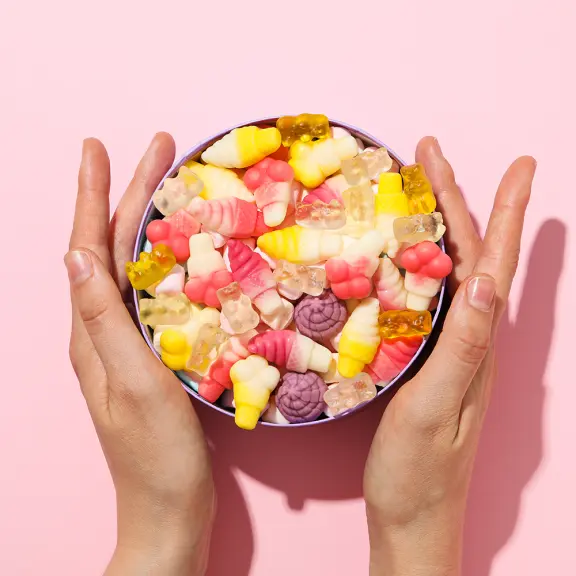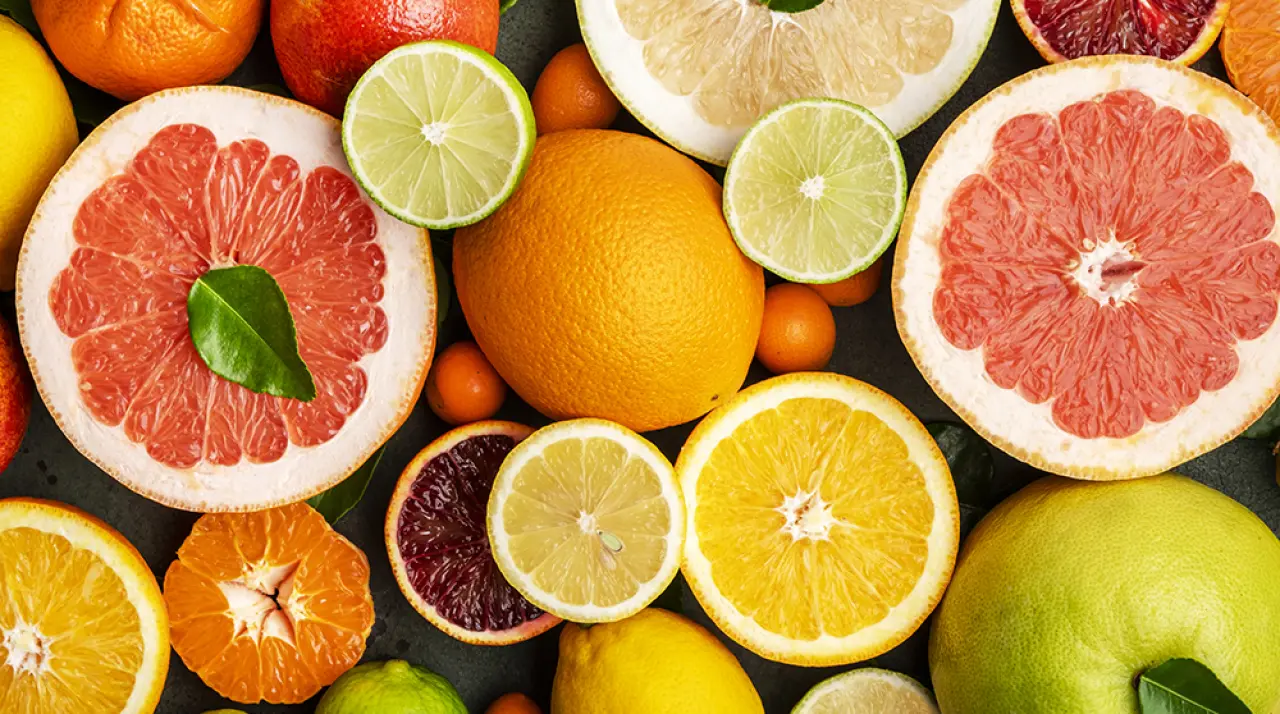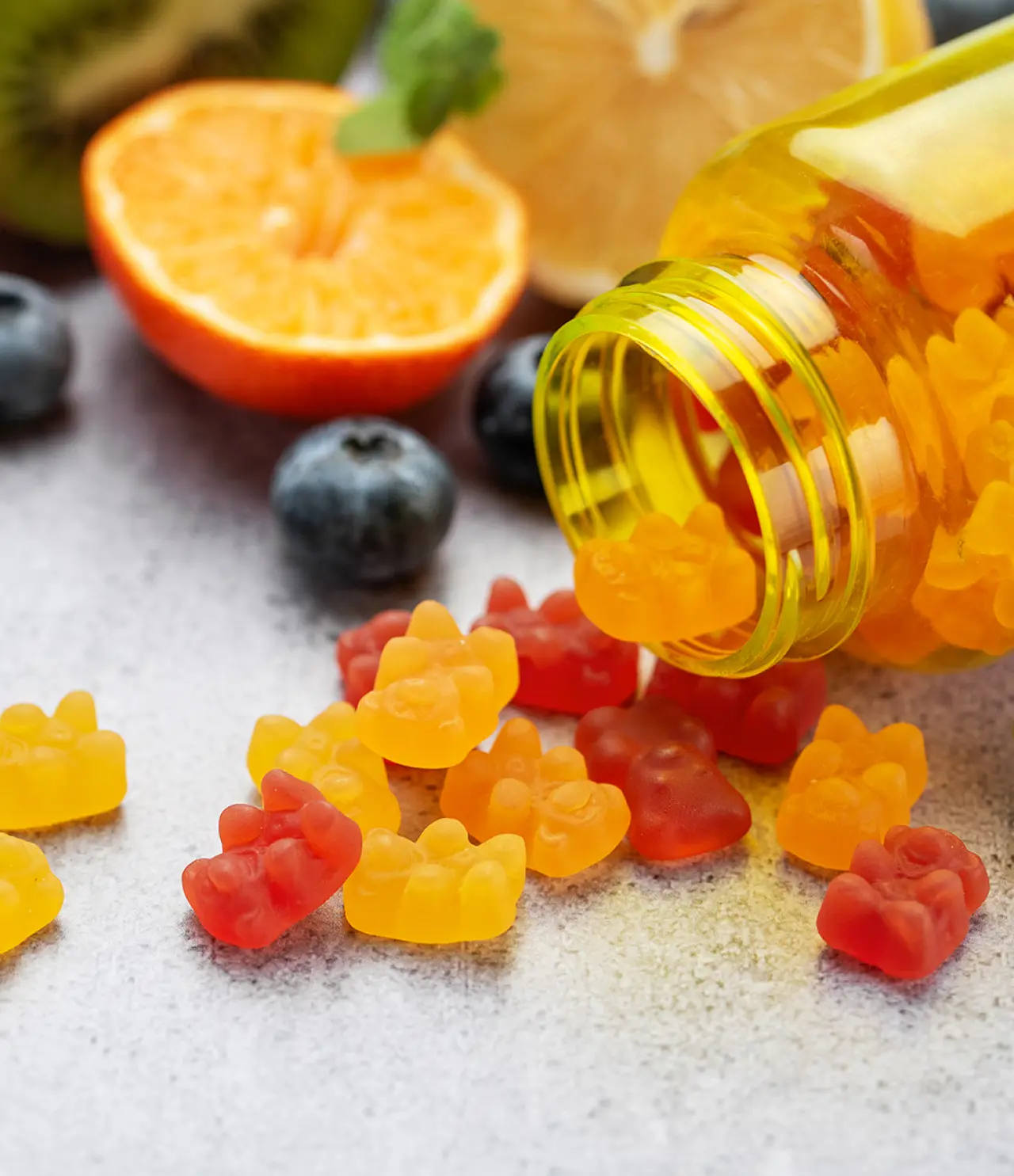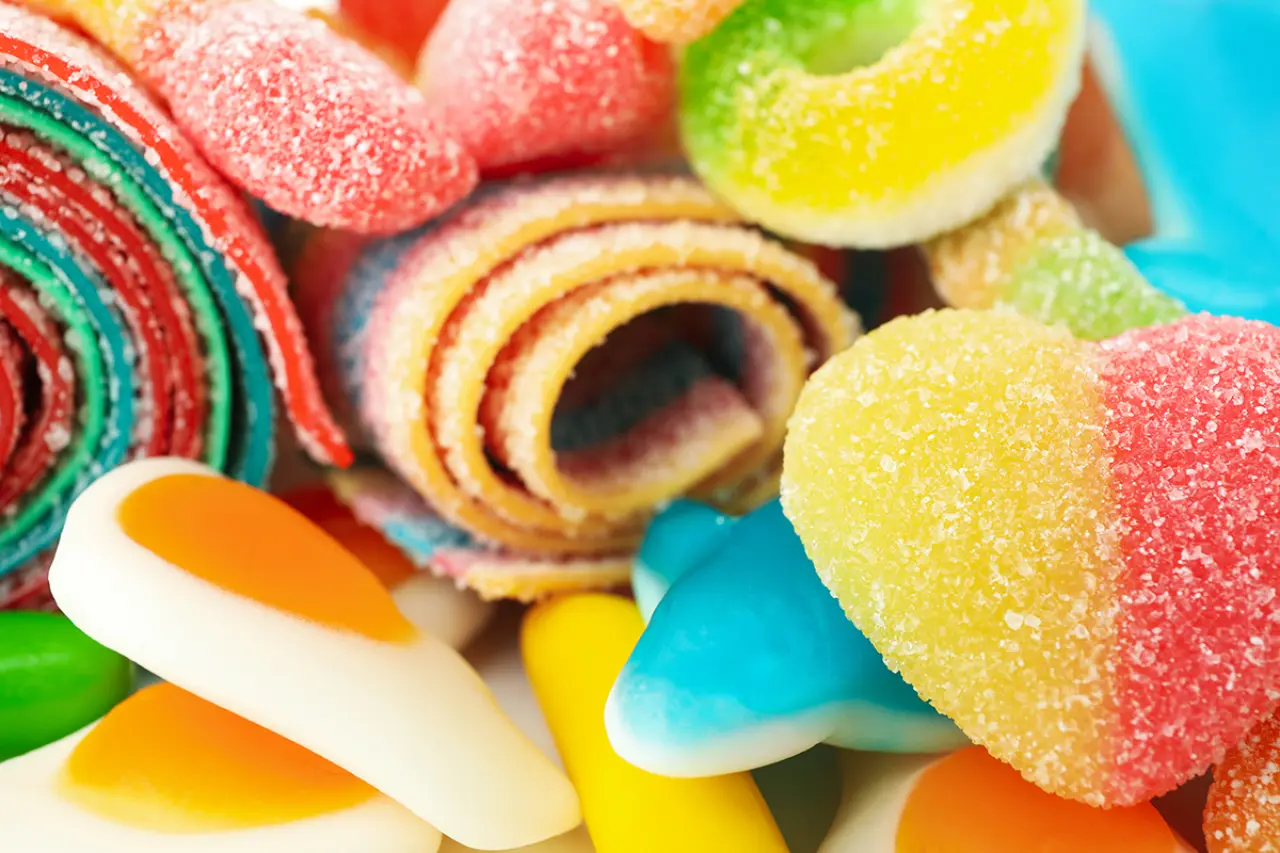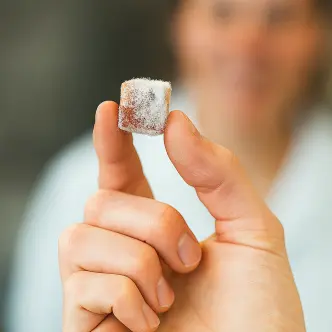Consumers are becoming more and more conscious about health and are looking for (slightly) more healthy alternatives. Talking about health, there is also a trend in switching from sugar to sugar-free ingredients. This way sugar-reduced and sugar-free gums and jellies can be made. There is a whole world of different sugar-free ingredients, for example inulin, FOS, maltitol, xylitol and other fibers that can be used to get gums and jellies with the desired flavour and texture. Sugar-free ingredients are known for they laxative effect though and therefore it is not always a great option as a replacer for your indulgent moment.
Sugar-free and sugar-reduced are popular claims to be put on gums and jellies. Next to that there are much more claims that are used. Think of the claim vegan or gluten-free. Vegan is a very big trend in the sugar confectionery as more people prefer plant based option for animal well-being, more environmental friendly or for religious reasons. For all claims there are options when selecting the right ingredients. Nevertheless, the recipe development is important and pilot testing as well, to see how the recipes behave during processing and in the sensory testing is important to check if the newly developed gummies are as tasty as wanted. Tanis has all the equipment available to make these gummies. Above all Tanis has an Innovation Center, at benchtop and pilot scale all types of recipes can be tested here, together with our customers.
A lot is possible in the world of gums and jellies and a lot of trends are seen, however the well-known gummy bear will not disappear and is also still growing in popularity. This shows how booming gums and jellies still are. Above all the world of gums and jellies stays technically challenging and interesting.
